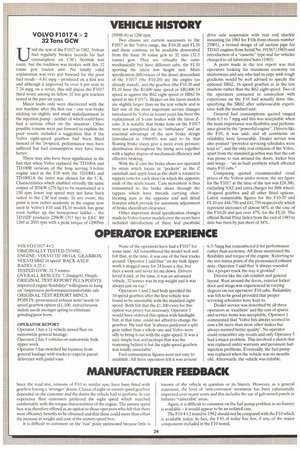NIANUFACIURER FEEDBACK
Page 184

If you've noticed an error in this article please click here to report it so we can fix it.
Since the road test, versions of F10 to similar spec have been fitted with gearbox having a 'stronger' detent. Choice of eight or sixteen speed gearbox depended on the customer and the dudes the vehicle had to perform. In our experience fleet customers preferred the eight speed which matched comfortably with the torque characteristics of the engine. The sixteen speed box was therefore offered as an option to those operators who felt that there were efficiency benefits to be obtained and that these could more than offset the increase in weight and cost of the sixteen-speed box.
It is difficult to comment on the 'rust' point mentioned because little is known of the vehicle in question or its history. However, as a general statement, the level of 'anti-corrosion' treatment has been substantially improved over recent years and this includes the use of galvanised panels in hitherto 'vulnerable' areas.
Again, it is difficult to comment on the fuel pump problem as no history is availableit would appear to be an isolated case.
The F10 4x2 tested in 1982 should not be compared with the F10 which is available today. In fact, the F10 of today has few, if any, of the major components included in the F10 tested.
































































































































































































